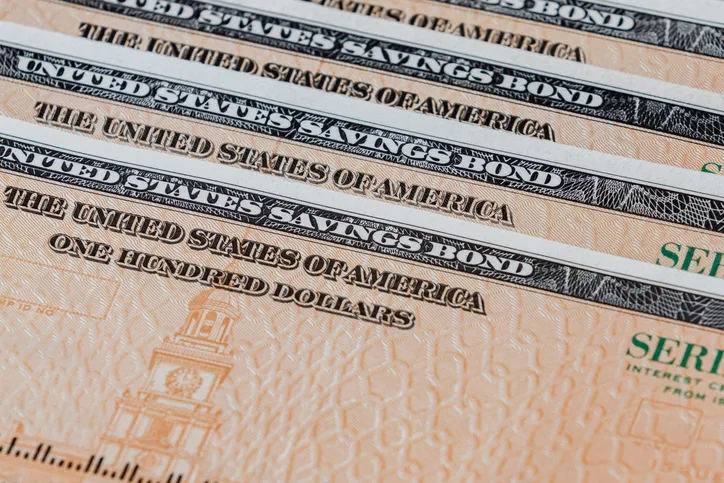When comparing municipal bonds vs. Treasury bonds, investors often weigh tax advantages against perceived safety. Municipal bonds, issued by state and local governments, may offer tax-free interest income at the federal and sometimes state level. Treasury bonds, backed by the U.S. government, provide reliable interest payments and strong credit security. The decision between the two generally depends on an investor’s tax situation, risk tolerance and income goals.
Need help selecting bonds for your portfolio? Connect with a financial advisor and get an expert’s opinion on your portfolio needs.
What Are Municipal Bonds?
Municipal bonds, often called “munis,” are issued by cities, states and other local government entities to fund public projects. These projects might include schools, roads or infrastructure improvements. Investors lend money to the issuing government and in turn receive regular interest payments until the bond matures.
Municipal bonds generally fall into two categories: general obligation bonds and revenue bonds. A general obligation bond is supported by the taxing authority of the city or state that issues it. Revenue bonds, in contrast, are repaid from the earnings of the specific project they fund, such as toll roads, utilities or similar services.
What Are Treasury Bonds?
Treasury bonds are issued by the U.S. Department of the Treasury to help fund federal government operations. They are considered among the safest investments because they are backed by the full faith and credit of the U.S. government. Treasury bonds typically pay a fixed interest rate every six months until they mature, usually in 20 or 30 years.
Along with Treasury bonds, the government also issues shorter-term securities, such as Treasury notes and Treasury bills. All of these are collectively referred to as Treasuries, though only Treasury bonds carry the longest maturities.
Municipal Bonds vs. Treasury Bonds: Key Differences

When comparing municipal bonds vs. Treasury bonds, several distinctions stand out. Differences in credit risk, tax treatment, yields and market liquidity shape how each fits into an investor’s portfolio.
Credit Risk
One of the most notable differences between municipal bonds and Treasury bonds is credit risk. Treasuries carry virtually no default risk since the federal government can raise taxes or issue additional debt to repay bondholders. This is why Treasuries are considered a benchmark for “risk-free” returns in global finance.
Municipal bonds, on the other hand, carry some degree of default risk. While defaults are rare, they do happen, particularly with revenue bonds tied to projects that may not generate sufficient income. Credit ratings from agencies like Moody’s or S&P provide a way to assess the relative strength of a municipal bond issuer.
Tax Treatment
Municipal bonds often attract investors because of their favorable tax treatment. Most municipal bond interest is exempt from federal income tax. In many cases, it is also exempt from state and local taxes, if the investor resides in the state where the bond is issued. This makes munis particularly attractive to investors in higher tax brackets.
Treasury bonds, by contrast, are subject to federal income tax but exempt from state and local taxes. This can provide an advantage to investors living in states with higher tax rates, although they will still owe federal tax on the interest income.
Yield Differences
Because of their tax benefits, municipal bonds typically offer lower yields than comparable taxable bonds. However, the after-tax yield can be higher for investors in high tax brackets. To compare fairly, investors often use the “taxable equivalent yield” formula, which adjusts muni yields for an investor’s tax rate.
Treasury bonds usually pay higher nominal yields compared to munis of similar maturity. Because Treasuries are taxable at the federal level, the benefit ultimately depends on each investor’s tax situation.
Liquidity and Market Size
The U.S. Treasury market is one of the largest and most liquid financial markets in the world. Investors can buy or sell Treasuries easily, with transparent pricing and narrow bid-ask spreads. This high liquidity makes them attractive for institutions and individual investors alike.
Municipal bonds are less liquid, as the market is smaller and more fragmented. Pricing can vary depending on the specific issuer, maturity and credit rating. While large institutional investors often dominate the muni market, individuals still participate through direct purchases or municipal bond funds.
Which Should You Buy?
Deciding between municipal bonds and Treasury bonds often involves more than comparing yields. A useful starting point is to consider after-tax returns relative to your income needs.
For example, if you earn $300,000 a year and fall into the 35% federal tax bracket, a 3% municipal bond could deliver a higher after-tax return than a 4% Treasury bond. On the other hand, if your annual income is $70,000 and you’re in the 22% tax bracket, the tax benefit is less meaningful, and Treasuries may leave you better off.
Another way to evaluate munis is by calculating the taxable equivalent yield (TEY). The formula is:
Taxable Equivalent Yield = Municipal Bond Yield ÷ (1 – Tax Rate)
So if you’re in the 35% bracket and considering a muni yielding 3%, the TEY is: 3% ÷ (1 – 0.35) = 4.62%
That means the muni effectively outperforms a taxable bond paying anything less than 4.62%. For someone in a lower bracket, the TEY would be smaller, making Treasuries more competitive.
If you’re in the 22% bracket considering the same muni, the TEY is: 3% ÷ (1 – 0.22) = 3.85%
The table below offers a quick comparison:
| Tax Bracket | Municipal Bond Yield | Taxable Equivalent Yield | Competing Treasury Yield Needed |
| 22% | 3% | 3.85% | More than 3.85% |
| 35% | 3% | 4.62% | More than 4.62% |
When to Buy Both
An investor doesn’t always have to choose between municipal and Treasury bonds, since holding both can serve different purposes simultaneously. Treasuries often work well in retirement accounts, where their interest is taxed later and their liquidity provides flexibility. Municipal bonds, meanwhile, can add value in taxable accounts by reducing the bite of federal and, in some cases, state taxes.
For instance, someone in a high bracket might keep Treasuries in an IRA for long-term stability, while using munis in a brokerage account to generate tax-efficient income. This mix creates a layered structure: Treasuries help with cash flow and portfolio defense, while munis make the income stream more efficient after taxes.
Bottom Line

Municipal bonds and Treasury bonds each bring different strengths to the table, and the right choice often depends on your tax bracket, income goals and portfolio mix. A high earner might find munis more rewarding after adjusting for taxes, while someone seeking maximum liquidity could lean toward Treasuries. Blending both can provide a balance of stability and efficiency, and in some cases, other fixed-income or equity investments may be more appropriate.
Tips for Investing in Bonds
- A financial advisor can help align bond choices with your income needs, tax situation and risk tolerance. Finding a financial advisor doesn’t have to be hard. SmartAsset’s free tool matches you with vetted financial advisors who serve your area, and you can have a free introductory call with your advisor matches to decide which one you feel is right for you. If you’re ready to find an advisor who can help you achieve your financial goals, get started now.
- Bond prices move inversely to interest rates. If rates are expected to rise, shorter maturities may reduce the risk of price declines. Consider mixing government, municipal and corporate bonds to balance safety, tax benefits and income potential. Diversification helps reduce the impact of any single issuer or sector.
Photo credit: ©iStock.com/Torsten Asmus, ©iStock.com/JJ Gouin, ©iStock.com/Andrii Dodonov
